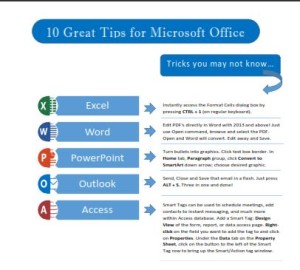That long newsletter or report with lots of images, tables, comments, etc., is staring you in the face, and you need to edit or format several of them. Not knowing the shortcuts can involve an annoying amount of scrolling, zooming or anything else that will propel you through the pages to get to that next picture or special object.
Reviewing or editing someone else’s work that you are not familiar with makes it even more difficult but not to worry…Rescue is close at hand. Word has a solution that lets you zip through the document and skip to the next object you are searching for in a jiffy.
How to Navigate to Next Object of Same Type
That’s the job of Word’s Go To command. You have probably used the Find and Replace commands to speed up searching and replacing text. In that same dialog box lives the Go To command tab. It allows you to jump to a specific Page or next Comment, Graphic, Table, and several other features. The default is Page but just select the command you want for navigation.
Ribbon: Home tab/Editing group/Find/Go To…
Keyboard: CTRL G or F5 function key

We’ll choose Graphic for the Go To example here but it can be anything in the Go to what: list. Following is an example of a document on Efficiency Tips that has a graphic on page 3 and the next one on page 10:
- Start at the top of the document (CTRL HOME)
- Display the Go To tab
- Click the Next button to go to first picture on page 3
- Click Next again to jump to next picture which is on page 10
- Continue until completed or move back through the pictures with Previous
“Efficiency Tips
Do you want to be more efficient? The following tips can help you increase your productivity and are easy to implement. Being more productive will help you achieve your goals and success more quickly.
Don’t Multi-Task:
Focus on one task at a time. This will ensure that you are giving your full attention to what you are doing and increase your ability to utilize the power of the flow state. Use your to do list and pick off one item at a time.

Page 3
Plan:
You can’t achieve anything without knowing what it is you want to achieve. You need to know your goals. It’s also important to create a plan on how to achieve them. Set yourself daily goals and use a to do list to help you identify what you need to achieve each day. Tick things off as they are completed.

Page 10
Remove Distractions:
If you want to become more productive then you need to remove distractions. shut down all social media and email. Turn off the T.V. and your mobile phone. Set a specific time aside each day when you can you use those things and you’ll get a lot more accomplished when not constantly disturbed by messages and notifications.
You can become more productive if you use these tips!”
In the above example, you jump from first graphic on page 3 to next on page 10 with a quick click on the Next button!
Go To Options in Older Word Versions
Word 2010 and prior versions had an additional method for navigating through objects with the Object Browser which was located at the bottom of the vertical scrollbar. Clicking that icon gave you the same list of objects that you see on the Go To tab command. It uses arrows for Next and Previous navigation. Not sure why this handy tool was removed but when Word 2013 arrived, sadly the Object Browser did not.
The Go To dialog box is such a great, fast way to leapfrog through an object-heavy document with no guess work – no scrolling required. And, if you use the keyboard shortcuts for quick access, it’s even better!
If you like fast ways to move around your lengthy document, you might want to look at this post on Styles where instead of special objects, you can use text styles to navigate: https://gaylelarson.com/word-styles-make-formatting-easy-peasy/
Let me know in the Comments if you have saved time using the Go to what: feature on a long document!
 Click to download great tips to speed up your Office projects.
Click to download great tips to speed up your Office projects.